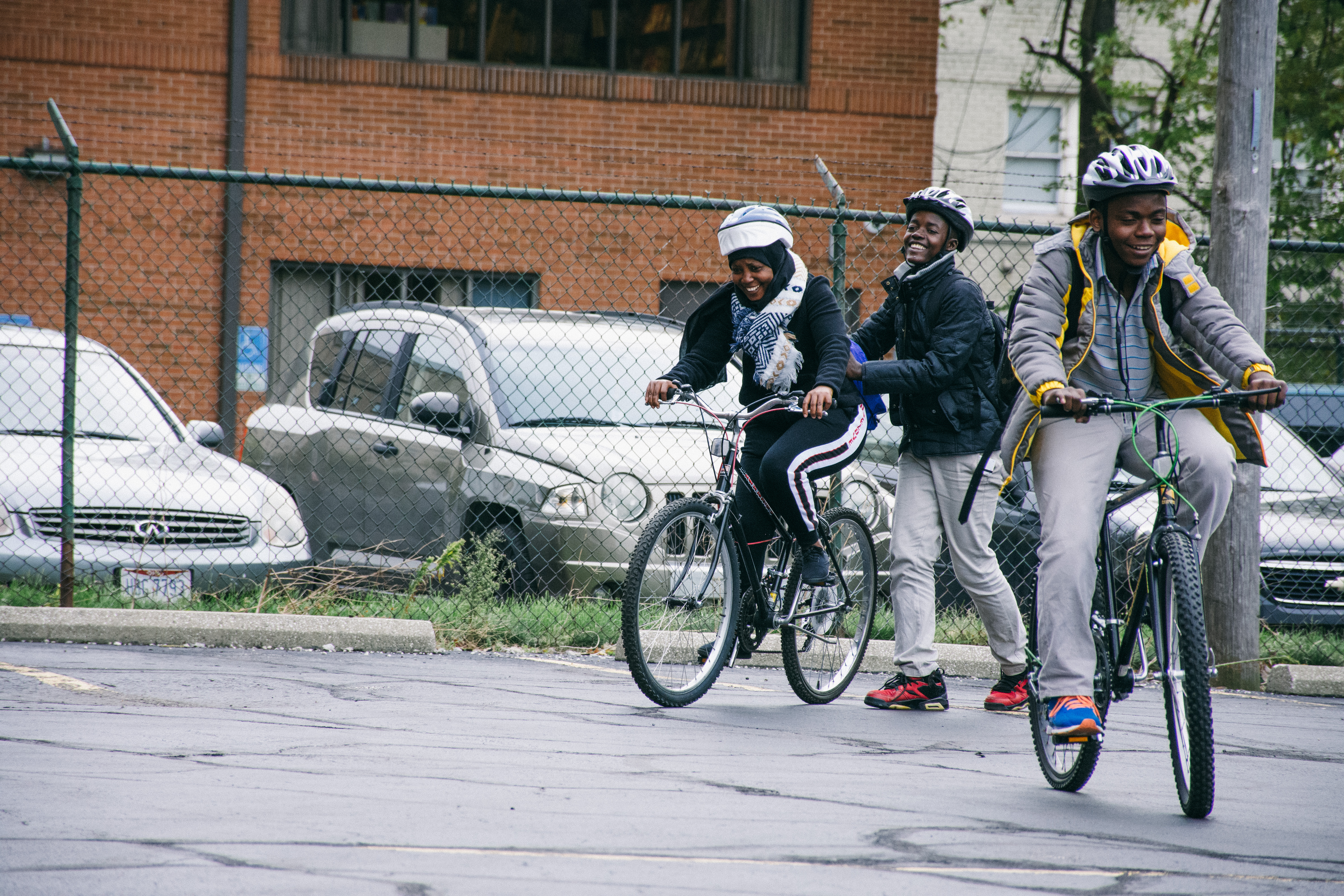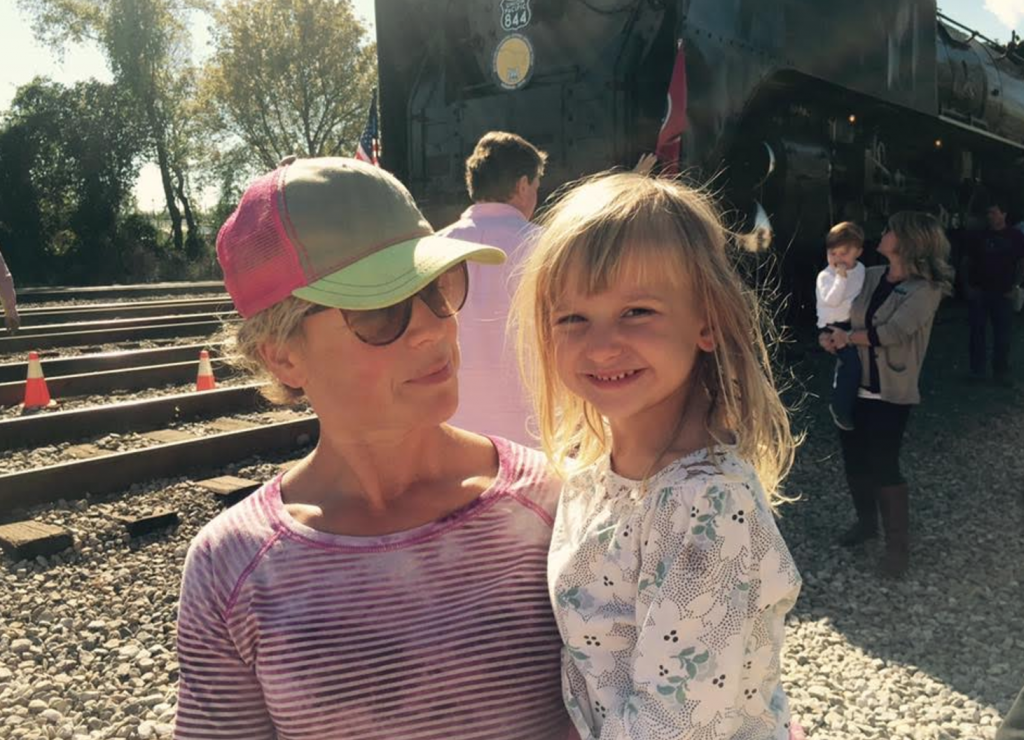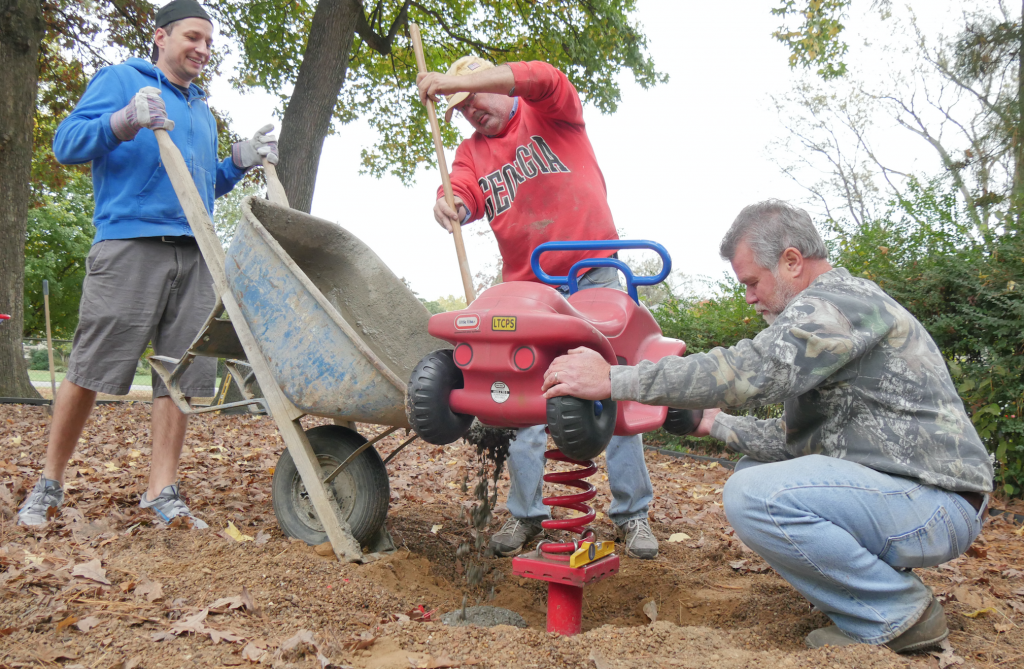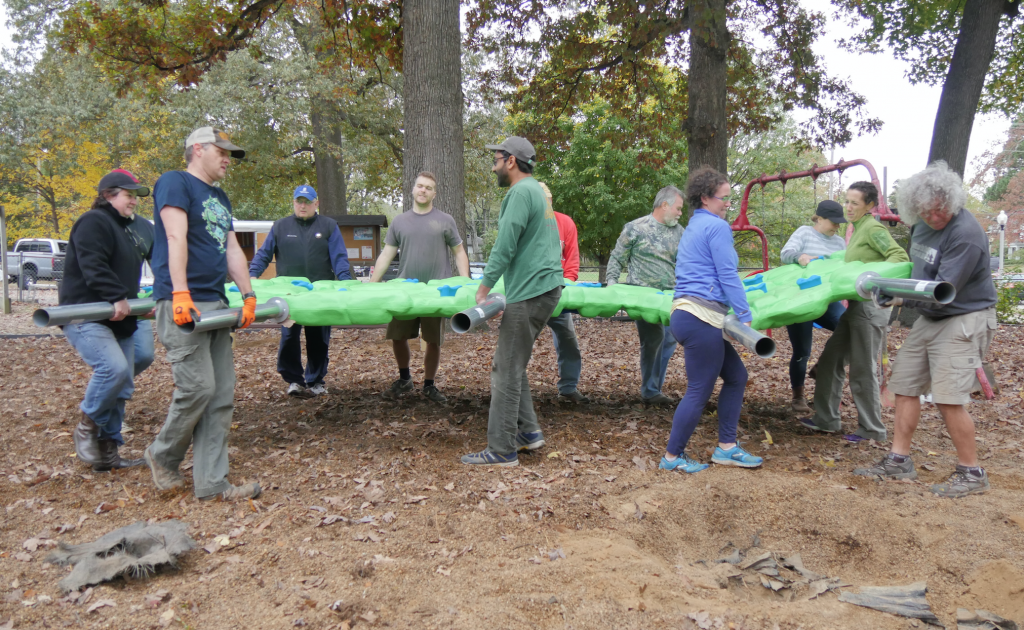While the average budget for ioby projects is around $4,000, many are larger scale. If you have your sights set high, your budget—and fundraising skills—will have to rise to the challenge.
Crowdfunding large amounts of money on ioby is totally doable, but it takes some extra planning. In our Rainmakers series, we’re sharing stories and tips from Leaders who have successfully raised $10,000 or more for their ioby campaign. Learn how they did it, and how you can do it, too!
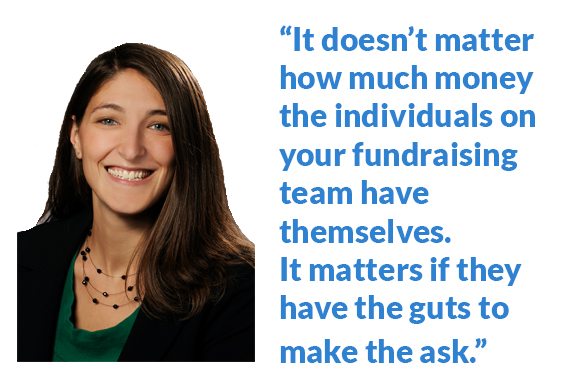
A few months back, Aylene McCallum, Director of Downtown Environment for the Downtown Denver Partnership (DDP), walked us through the steps she took to bring the city’s Arapahoe Street Protected Bike Lane project from vision to reality. Her initial budget of $155,000 was partially covered by grants from the Gates Family Foundation and Downtown Denver Business Improvement District, but that still left her with $35,000 of crowdfunding to do.
We spoke to Aylene again, to get into the nitty-gritty of the fundraising strategies she employed and lessons she learned from her years (yes, years!) of working to improve quality of life in downtown Denver.
Q: Who was on your fundraising team?
Our team was made up of 20-ish diverse volunteers who really wanted to fundraise and contribute to creating a more bike-friendly downtown. We had business leaders, transportation people, real estate developers, foundation employees, community organizers, architects, political advisers… But they all believed in our shared goal.
It’s okay—and can even be ideal—to have a large steering committee like this. It helps you tap into more networks, spread the word, and build support more widely. You want people with different types of connections. If you have five best friends on your committee, they’ll probably all know the same people!
That said, don’t pick random people just for diversity’s sake. Make sure everyone you invite understands the importance of the project and is personally passionate about it: those who are are genuine will make a better effort to fundraise. This requires careful cultivation, so don’t rush it, if at all possible. You also need to take the time to prep everyone about what’s entailed and what’s expected. But you don’t want to draw these processes out forever, either! It’s all a balance.
It doesn’t matter how much money the individuals on your fundraising team have themselves. It matters if they have the guts to make the ask, it matters who they’re connected to, and it matters how committed they are to the cause.
In the end, probably the most important thing is that you have a very strong, committed, inspiring leader to whip them into shape! This probably should not be you, since you’ll have so much else to do, but you should absolutely support this person.
Q: Were you already comfortable with asking for money?
I had been raising sponsorship money for DDP events for a while before this, so I was very comfortable asking people to donate directly. What I really welcomed ioby’s help with was teaching my fundraising team how to ask for money. I credit ioby for counseling me through that effort and giving me great ideas about how to engage the committee.
One lesson I learned is that you should communicate constantly with your team. Don’t doubt that they’re making the asks, and trust them that they’ll deliver, but do help them stay accountable and organized, and keep the momentum up by staying in close touch. I set lots of goals for my committee so they could understand what success looked like for their effort. “If everyone on the team brings in five people who can give $250, we’ll make our goals…” Really mapping it all out helps keep energy up through the whole campaign.
When you see a superstar team member doing great, throw them some love; shout them out to the rest of the committee. “Hey everyone, I saw Mike brought in $1,000 today—great work!” It shows them all that asking does work, that success is being achieved, and that they’re making it happen.
Q: How did you plan your fundraising?
We just asked all our potential funders: “What’s a reasonable amount of money we could expect to raise from your organization?” And we asked our partners: “How much do we need to bring in to make progress on this project?”
There was a lot of back and forth, especially on the partner side. You just have to get comfortable with the numbers being fluid, stay confident, keep employing the same good techniques, and you’ll get there. Keep all your resources in mind, always have a plan B, and be thinking two steps ahead: “Who’s our Hail Mary if we get desperate? How could we reduce our costs if we needed to and still make something good happen?”
This is another area where the more people you bring into the process, the better—on both the funding and the partner side. The breadth of your network is critically important to your success—in fundraising and for your project in general. More people equals more opportunities.
Q: How did storytelling factor in?
I am not a communications person! I kind of get it, but I’m not in the marketing department. I really had to learn along the way. One thing I realized is that we had two different stories here with two different life cycles: the fundraising phase and then the larger picture of the whole project. The fundraising story was about why bike lanes are good for cities. The larger story was more about the private and public sectors coming together and stretching what each of them normally does.
I don’t think we got a lot of donations because of our story being in the national or local media; our fundraising success really came from the individual work of our task force members. The media does a good job of raising awareness, but it usually isn’t until someone asks you personally to donate that you get serious about giving. So you really can’t count on the media to bring in your money; you have to plan personal asks.
Q: What methods did you use to ask people?
We used a combination of what seemed most appropriate and most effective. If you think the person you want to ask is good with email, write to them. If you’re going to see them, ask in person.
Plan your asks in waves. It’s hard to ask hundreds of people consistently for the duration of your campaign; you’ll lose your stamina. We put a bunch of asks out in an initial wave and then sat back to watch and assess, and we used what we learned from that wave to plan for a second. We thought of some new people to ask—and asked some of the same people again—with improved tactics. You can even try doing a third wave to check up on anyone who said they wanted to give but didn’t yet. In every case, there can be a fine line between nudging and bugging—that’s where the personal relationships can really help out.
We had one committee member who was a very prominent business person in the community. One day he said, Come to my office and we’ll make some calls. I sat with him for an hour and he called friend after friend to ask them to give. We got so many donors! That was a very productive hour of our time, and I remember being surprised that he was willing to do it.
The lesson there: don’t doubt how much people want to help you. You never know who’s going to step up, and what connections they have.
Q: Did fundraising help with community buy-in?
Any fundraising campaign is a great opportunity to build community. Build that aspect into your strategies. Think about how you’ll be able to tap into community energy—not just money—in the future to accomplish other goals. Don’t think of your campaign as “one and done.”
Build time into your work plan for assessing and responding to whatever happens right after your crowdfunding campaign; don’t jump into another project right afterward. You want to be able to leverage the success you achieved here in your next project, not let it go cold. Don’t be so busy doing the next thing that you can’t fully capitalize on your project’s success.
Q: Any other advice?
Send lots of thank-you notes. Lots of them!

